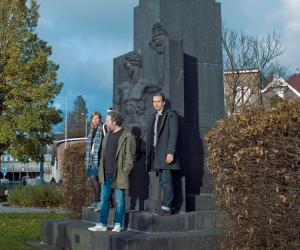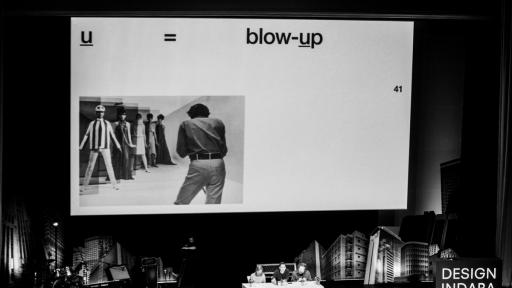The work of Dutch graphic design studio Experimental Jetset, comprising members Marieke Stolk, Erwin Brinkers and Danny van den Dungen, has its roots in the counterculture that swept through Europe in the 1960s.
Unlike today's youth, who are more visually literate from a young age, says Van den Dungen, graphic design was not really something they thought about growing up.
“For us, a fascination with graphic design started with stuff like record sleeves, music magazines, fanzines and band t-shirts,” he says. “That got us interested in graphic design in the first place and I think a lot of the work that we do is still related to that. There is always this sense that we referring to those groups or movements.”
A big influence on their work was the Dutch counterculture movement, Provo, which Stolk’s father was a founding member of. The 1960s group focused on provoking violent responses from authorities using non-violent action.
Stolk shares personal photos of her mother in a protest march carrying a blank banner and a photo of her father with a printing press. She explains that since mainstream printers did not want to print the subversive material of the movement, activism forced her father to become a printer.
The printing techniques and graphic style of the movement's communications materials is reflected in Experimental Jetset’s work today. The trio was also responsible for the curation, design and installation of Two or Three Things I Know About Provo, an exhibition on the Provo movement and its afterlife.
Experimental Jetset see their work in relation to their design forebears. Speaking on Modernism, whose spirit comes through in their work, Van den Dungen says: "We don't see Modernism as a single movement but rather a multitude of different movements, [all of which] have different, sometimes even opposing agendas. On the one hand, you have the Constructivist movements like the Bauhaus and the Russian Constructivists and on the other, you have movements like Dadaism and the Surrealists, who had a much more deconstructive way of thinking... We find it interesting to explore the field in between and to find new ways to relate ourselves to it."









